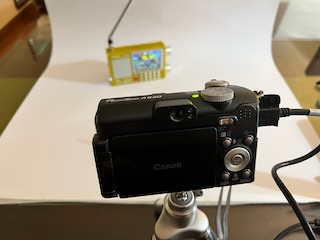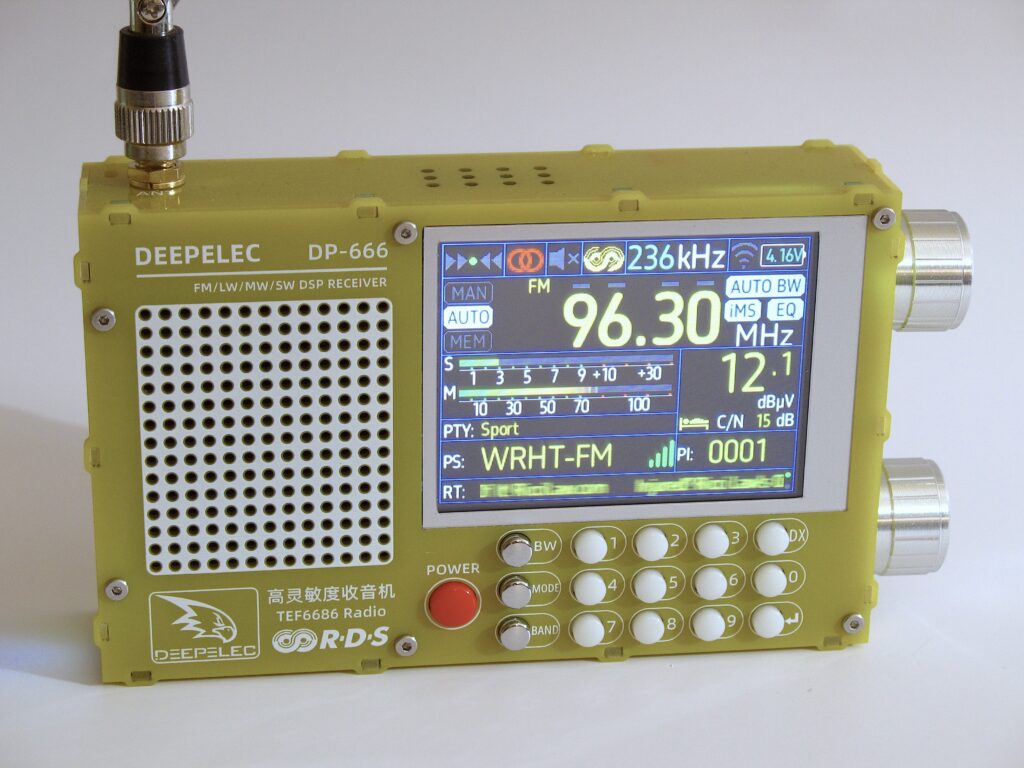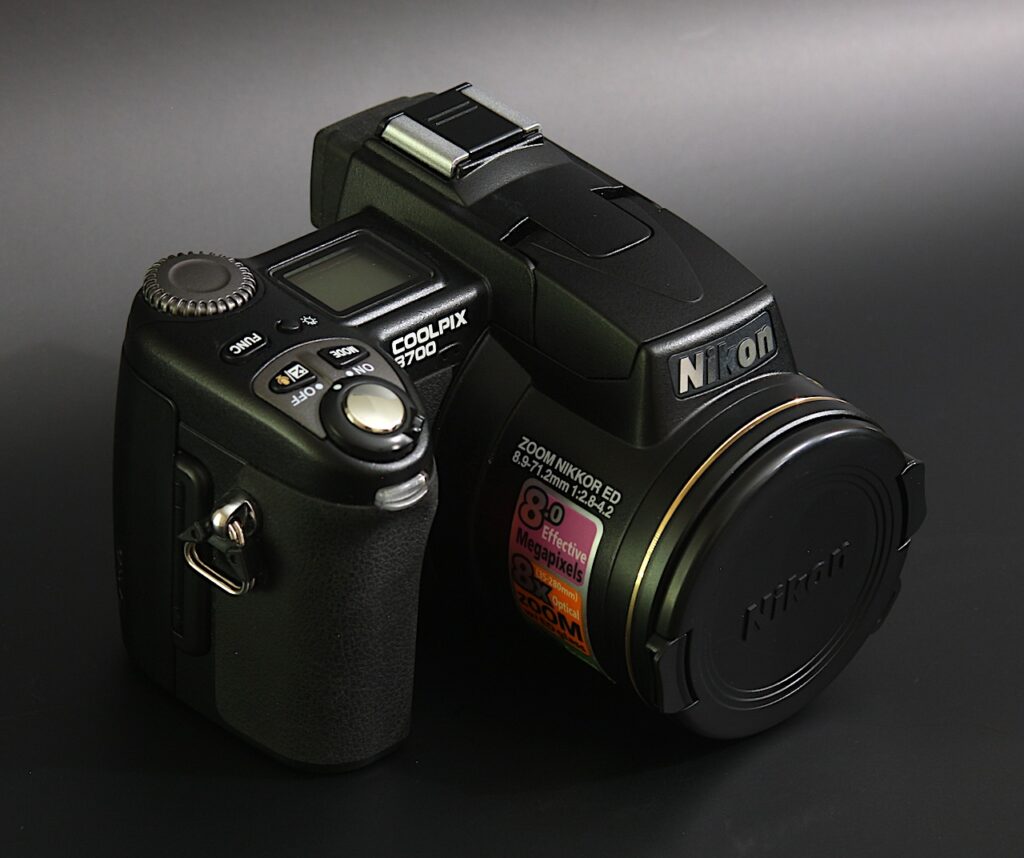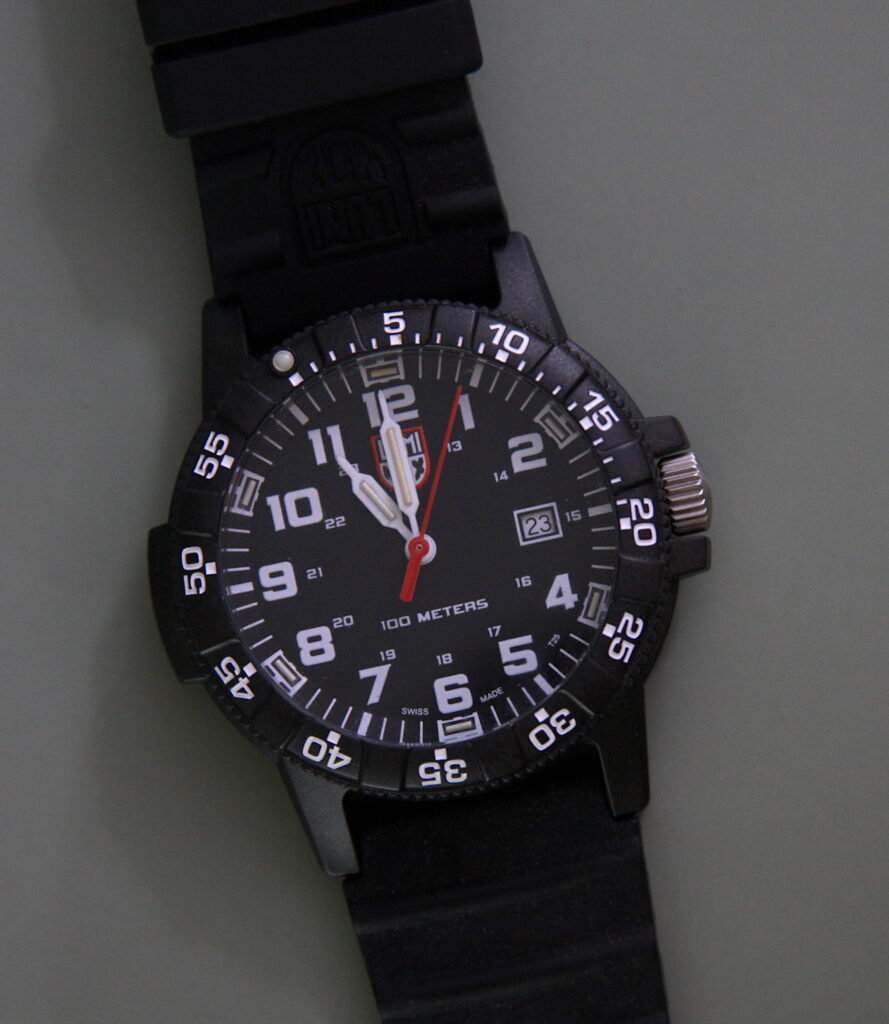More Camera Tethering

I’ve spent a full week or two going through my old collection of cameras to see if they still can connect to a computer. My camera tethering experiment has been a mixed bag so far.
I’ve come to some unusual conclusions. Read on.
My first conclusion is that camera manufacturers only support a camera for so long. Most cameras, provided that you don’t toss them around, will last for decades. So the only reason to stop supporting them is so that you’ll buy a new one. By the way here is the photo from the “studio” shot above.

This needs to be stated: For every camera I mention below they still function perfectly as a stand alone camera. Pick them up, push that shutter release and they will copy your vision to its memory card. I am only talking about the tethering function not being supported. The cameras are still good and viable.
A Few Examples
I’ll just give a quick rundown on the cameras I have been playing with this week.
- Canon Powershot A640
- Canon Powershot G7
- Canon EOS 40D
- Canon EOS M50
- Nikon D40
- Nikon D7000
- Sony Alpha ZV-E10
With the exception of the Canon EOS M50 and the Sony ZV-E10, the rest of the cameras are OLD. OLD, I tells you. Of the remaining cameras, only the Nikon D7000 is pretty well supported still.
Why Does This Matter?
Let’s say you want to tether. You understand the time saving benefits and the quality improvement of your photos. If you buy a camera that tethers you basically have a couple of options.
- Buy a brand new DSLR or Mirrorless camera at a decent cost.
- Buy a used camera on the cheap that can tether.
As stated earlier the camera manufacturers are happy to let these old cameras fall into oblivion. And as John’s Tech Blog is going to state: “I’m Not Too Happy About That”.
Too make my point I’m going to use the Nikon D40 as an example of my 2nd bullet point. You can find a used D40, from a reputable used camera dealer for about $50.
That’s an amazing price for a camera that can do great studio photos. Nikon claims that the D40 is still supported by their Camera Control Pro 2 software for tethering. Hook your D40 up to CCP2 and it DOES NOT WORK. Then you find out you need version 2.11 or earlier to make it work. And guess what? You can’t download it anywhere. Nikon will supposedly send it to you upon request.
Now, hook the same D40 up to TetherTools.com software, Smart Shooter 5 and it is recognized and works fine. Hook the D40 to CaptureOne and it works and takes photos but I just noticed I couldn’t get it to load a lens profile. So that works and seemingly works good but let’s just say there is an omission or two in support.
The Canon 40D is recognized in CaptureOne and it also does not load a lens profile. Unlike the Nikon D40, the shutter will release but no photo will display. But the Canon 40D works in a whole lot of other hunks of software. If you were a die hard CaptureOne fan you would be out of luck. Here is a pic from the Canon 40D taken from Smart Shooter 5.

As the pro wrestler LA Knight says, “Let me talk to you”. I demonstrate some of the things I have said in the video below.
Important Point
If you buy a camera you should immediately download all the control software for every operating system and store it in a folder FOREVER. Now we talk about support longevity.
If you buy that Nikon D40 mentioned just above ask yourself a couple of questions.
- Nikon doesn’t support D40 tethering anymore. Should I buy it at all?
- How long will CaptureOne or Smart Shooter 5 support it?
No way of knowing if they will ditch it. Another option is that you maintain the installer files as I recommended above and run a virtual machine on your computer or your server and freeze time. This works but could be a security issue running old OS’s on your network. There are ways to mitigate this using Virtual LAN’s and firewall rules but that’s a whole different subject.
So watch this quick video to see where I’m coming from.
Freeze Time
One of my favorite cameras for tethering is not a big fancy camera. It is a 2006 era point and shoot Powershot (Canon A640). It was inexpensive. It’s lasted for nearly 20 years. Finally, it has 3rd party software that still works on Windows 10. By the way Windows 11 no longer has driver support for most of these older cameras. And your manufacturer no longer provides drivers. You are dead in the water (not really) after Microsoft drops support for Windows 10. At this point you need to go into Linux and use some open source software solutions.
Newer Cameras
My Canon EOS M50 and Sony ZV-E10 are pretty well supported. That being said the free software that Sony provides is crapware. Canon EOS Utility works great and is free for the M50 but they sure do drop older cameras like a hot rock after a few years.
Also you may notice that the two aforementioned cameras are mirrorless and not DSLR cameras. That leaves me with only my Nikon D7000 DSLR which is still supported fairly well.
So What Do You Do?
It’s this strange concept called “Home Work”. Do your home work. Decide your brand. Try to gauge support lifetime. ASK QUESTIONS. One of the best forums ever for cameras is at DPReview.com. Then decide how you’ll deal with the obsolescence. And one obvious answer to that is to always maintain newer hardware if you can afford it. If not I would recommend sticking with Canon cameras. Canon has always played the tethering game better than anyone else. Speaking of which, here is a shot with my venerable old Canon 40D.

Tethering is awesome but not without a few pitfalls.
